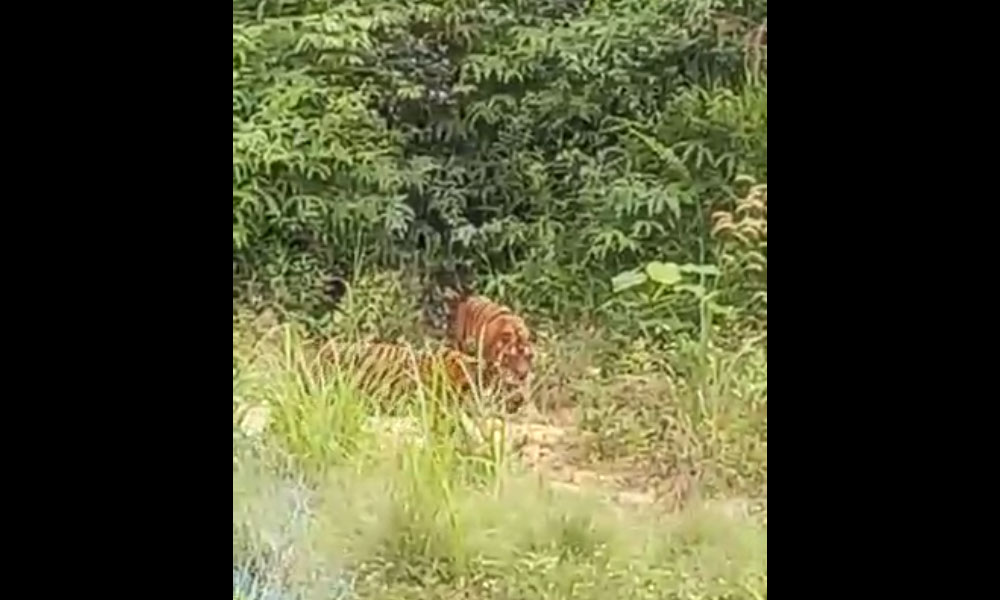The Orang Asli community in Kelantan has blamed a recent tiger attack on the loss of habitat due to logging but state Forestry Department director Abdul Khalim Abu Samah has a contrarian view.
Khalim (above) argued areas that are deforested are actually good for tigers.
He claimed that after an area is deforested, new vegetation will grow which will encourage the presence of new animal species that serve as food to tigers.
"Based on expert research, areas that have been deforested are actually good for the tiger population.
"The tiger population will become larger when small trees grow in the deforested area. The area will see the presence of animals such as mouse deers which is food for tigers.
"It will be easier for tigers to hunt their prey," Khalim said.
In contrast, he claimed that it was difficult for tigers to find prey in a forest reserve.
He was speaking at a press conference during a joint operation against trespassers at the Relai Forest Reserve in Gua Musang today.
Khalim was asked to respond to complaints that logging operations are threatening the tiger population and also putting them in conflict with humans.
This was amid the spotlight on a recent tiger attack on an Orang Asli which the community has blamed on a loss of habitat due to logging.
On Jan 7, an Orang Asli was mauled to death by a tiger near Pos Bihai, Gua Musang. Schools in the area were also closed amid claims of more tiger sightings.
The Orang Asli community claimed that deforestation in Gua Musang had driven the tigers closer to human settlement as they have lost their habitat.
The Kelantan government, which is reliant on logging revenue, insisted that logging had nothing to do with the tiger attack.
Logging in forest reserves
Khalim maintained that the state only approves logging according to the annual limits.
"We in Kelantan abide by the annual cut ratio (CTT) set by the National Land Council.
"We do not exceed the allowed ratio which involved 3,900ha a year as reported in the 12th Malaysia Plan," he said.
Khalim added that logging was only done in forest reserves that are intended for production and not conservation.
Once densely forested, the interior of Gua Musang has been the site of major deforestation due to agriculture and logging activities over the past several years, all of which pose a threat to both local wildlife and Orang Asli communities.
The proposed Nenggiri hydroelectric dam project in Gua Musang also poses another ecological threat that locals said would displace several Orang Asli communities.- Mkini





No comments:
Post a Comment
Note: Only a member of this blog may post a comment.